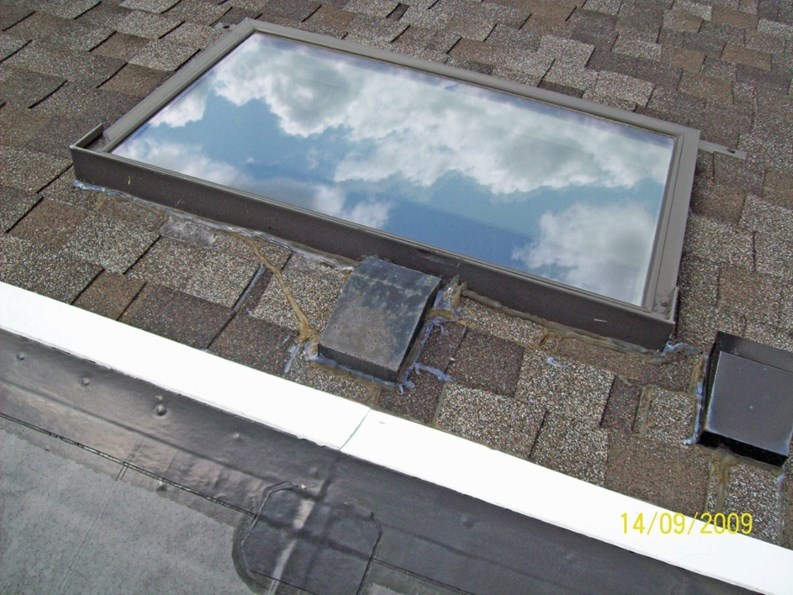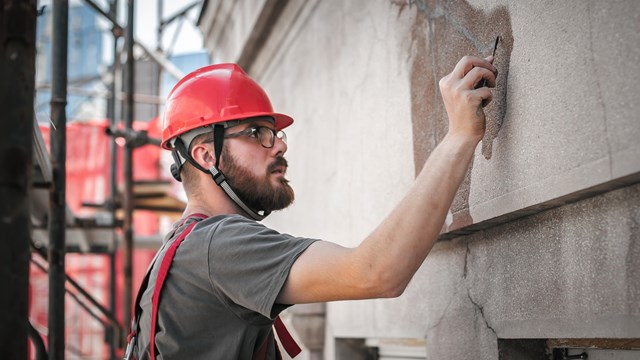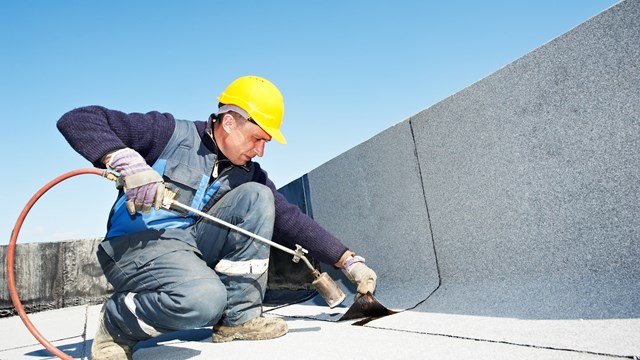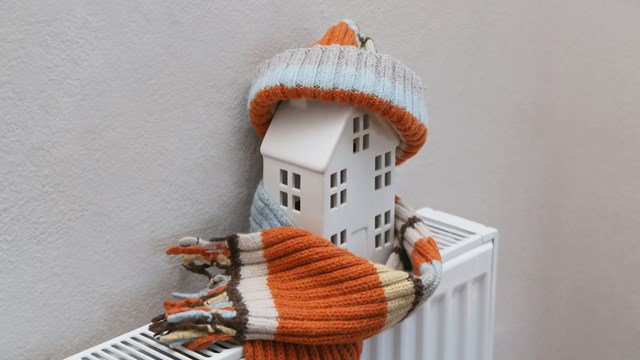For many condominiums, roofing systems, siding and pavement represent their largest overall replacement burdens. Because these types of projects often require an association to either exhaust a large chunk of its existing reserves, or require an assessment for funding, there is sometimes an attemptto “value engineer” such projects to keep the cost as low as possible. Unfortunately, compromising the scope of a project in order to accomplish one’s budget rarely proves successful.
Replace More Than Roof Shingles
For example, your condominium’s shingled roofs are 20-plus years old, and it’s about time to replace them.
However, replacing the roofing shingles alone is almost never the correct course of action. A very basic shingle replacement project, assuming minimal above-roof items like dormers, skylights and chimneys, typically costs approximately $5 to $6/squarefoot. More complex roof replacements can often exceed $10/square foot.
Larger Building Envelope
One of the most common misconceptions is getting condominiums to accept the fact that properly replacing its roof must include much more than removing and replacing the shingles. Condos need tounderstand the message that the roofing shingles are part of the larger “building envelope.”
Rarely can the roofing shingles be replaced properly without also addressing adjacent, intimately connected items.
For instance, well-informed engineers believe that the above-roof siding must be removed as part of the roofing shingle replacement. In some cases, entire above-roof walls are replaced. In other cases, targeted siding materials are removed. How much is replaced depends on the type of siding in place and how receptive it is to sectional replacement. However, replacing the roofing shingles without replacing the associated step flashings is a major compromise that we see far too often.
Furthermore, modern roof flashing techniques dictate the use of self-adhering membranes at critical locations, such as below step flashings. Without removal of the above-roof siding, it is not possible to install these critical flashings and underlayments. Keep in mind that shingled roofs rarely leak through the shingles themselves – rather, they typically leak at flashings. Many less scrupulous roofers will “save you some money” by re-using step flashings. Don’t do it; there’s just too much risk to justify it, whatever the savings.
Skylights Need New Flashing
Another item to consider when replacing shingled roofs is any skylights. As a minimum, new skylight flashing kits should be installed. The old skylight flashing kit is bound to have many holes due to nails from the previous roofing system. Also, as was the case with the above-roof walls, self-adhering waterproofing membranes should be installed around a skylight. It is possible to remove and re-install the original flashing kits, but they are usually damaged during removal. The cost of a new skylight flashing kit is typically under $100, and cutting corners here is ill advised. In fact, condominiums are encouraged to replace skylights that are more than 20 years old – the rationale being that the skylight will not last as long as the new shingles, and we want to avoid future sectional work. The cost to replace an average sized (3’ x 4’) skylight is approximately $800 - $1,000 when performed during roof replacement. As a stand-aloneproject, the price would easily double.
Gutter Repair
Condominiums are also encouraged to consider replacing gutters in conjunction with roofing shingles. Your 20-year-old condominiums also likely have 20-year-old gutters. Oftentimes, older gutters are attached with a spike-and-ferrule attachment system. This type of attachment system commonly loosens over time, as the gutters expand and contract with seasonal changes. This action causes the spikes to “wiggle” back and forth, opening up the holes, and causing the spikes to back out. Modern gutter installations utilize a bar hanger system that screws intothe fascia (and underlying framing) and is a much more solid method of connection. The estimated cost to remove and replace gutters and downspouts is approximately $12 - $15 per linear foot.
Chimney Caps Overlooked
Chimney caps are an often-overlooked part of a roofing system. A typical, developer-installed chimney cap is usually constructed from galvanized sheet material. High-end homes sometimes utilize much more resilient, long lasting caps, such as copper, lead- or zinc-coated copper, or stainless steel.
If you have one of these high-quality caps, they will typically provide a service life equal to two cycles of roofing shingles. However, if you have the typical galvanized caps on your home, they should be replacedwith the roofing system.
Even if your caps don’t seem too bad, there are reasons to replace them anyway. The estimated cost to install a good quality (zinc- or lead-coated copper) average sized(2’ x 3’) chimney cap is approximately $800 to $1,000.
It goes without saying that all miscellaneous rooftop items, such as plumbing pipe boot vents and exhaust vents, must be replaced as part of any proper roofing job, but you might be surprised how oftenthey aren’t.
Some condo boards (although certainly not all) choose to solicit prices from severallocal contractors, based on a very loosely defined scope of work, and award the job to the low bidder.
However, unless the contractors are all bidding on a crystal clear scope of work, the low bid is often low due to some compromise in work quality, or an omission. A condo can award jobs to low bidders, but only when all bidders submitted their proposal based on a very specific scope of work, guaranteeing that all are “apples for apples” bids.
Replacement of failing, original wood siding and trim is usually a very large financial expenditure that 20-year-old condominiums are facing. Soft white pine, commonly used in this area for rakes, fascias and door/window trim, does not perform well in the New England environment. Often, the trim was not properly coated when originally installed, and fails quickly. Many condominiums are now facing widespread pine trim failure in as little as 5 to 7 years. The cost to remove wood siding and trim, and install new wood siding and trim (depending on the grade and type of replacement siding and trim, as well as complexity of the buildings) typically ranges between $10 and $20/ square foot.
Vinyl Siding
Many condominiums are opting to install maintenance-free vinyl siding when original wood siding and trim fail. Vinyl (PVC) siding costs less to install than wood siding, and eliminates costly, regular painting cycles and carpentry costs. The average cost to remove wood siding and trim, and replace it with new vinyl siding and cellularPVC trim, is approximately $8 to $15/sq. ft., depending on the type and style of vinyl siding chosen, and the complexity of the buildings.
When considering a siding replacement project, similar issues must be considered. One of the most contentious items when developing a scope of work relating to siding replacement is dealing with older doors and windows. This becomes particularly problematic in the condominium world, where the windows and doors are usually owned by the individual unit owner. When a door or window has “failed” is very subjective. A drafty window or door may be a minor inconvenience to some, but completely unacceptable to others.
Window Replacement
What is clear is that, from both a financial and convenience standpoint, the best time to replace old, failing windows and doors is during siding replacement. Financially, you would expect to get better pricing to replace doors and windows when you already have a contractor on-site, performing a larger siding project. The cost to remove a 6’ sliding glass door during a re-siding project, and replace it with a solid vinyl slider is approximately $800 to $1,200. Clad wood sliding glass doors, which some prefer because the inside can be stained or painted, are most expensive, typically $1,500 to $2,000 per door. From a convenience standpoint, the work will go much more quickly and smoothly if the windows and/or doors are replaced concurrently with siding, than as a separateproject at some later date.
From a functional standpoint, flashings around windows and doors are among the most critical of all siding-related details. It is impossible to properly flash a new window or door after the fact, without removing at least some of the surrounding siding. Window and door flashings must be integrated into the siding underlaymentsto work properly.
Replacement windows can be installed without removing siding, but replacement windows are installed into the original (probably poorly flashed) window frame. Apart from poor original flashings, often the window frames themselves are composed of soft white pine, and are rotting. Some condos have installed replacement windows, only to have window leaks continue. Installed properly, replacement windows can provide many years of leak-free service. Installed poorly, they can be a disaster.
Depending on the type of siding on a building, the cost to install a replacement window can be much less than properly installing a “new construction” style window, which often makes them tempting. Any average sized (30” x 57”) replacement window will typically cost approximately $400 to $500 installed. An equivalent quality, new construction window, especiallyif it is surrounded with wood siding and trim, may cost twice that much.
Sliding glass and entry doors can be particularly troublesome. It is rare to find a true pan flashing below a developer-installed 20-year-old slider or entry door. Installing a proper pan flashing below a door requires removal of the door. Removing and re-installing a 20 plus year old door is not typically feasible. The doors tend to be “racked” (twisted out of shape) when they are removed, which will damage glazing sealing and possibly the door frame as well.
Other Components
The point stands for some site-related components, too. If your pavement needs to be replaced, any drainage or grading issues should be corrected and damaged curbing should be replaced. Issues with underground utilities, such as electrical service and sewage conveyance should be addressed during pavement replacement. If your pool or tennis court is being replaced, does the fencing or patio need to be replaced also?
Whether your roofing, siding or pavement (or just about anything else around your property) need to be replaced, it is critical to consider any and all related components. Failure to do so often results in a completed project that comes in “under budget” but hasn’t really solved whatever problems forced the work to begin with. And there is no worse way to spend your important Reserve funds than on a “value engineered” capital improvement project that came in below budget, but in the end, didn’t stop those roof leaks.







Leave a Comment